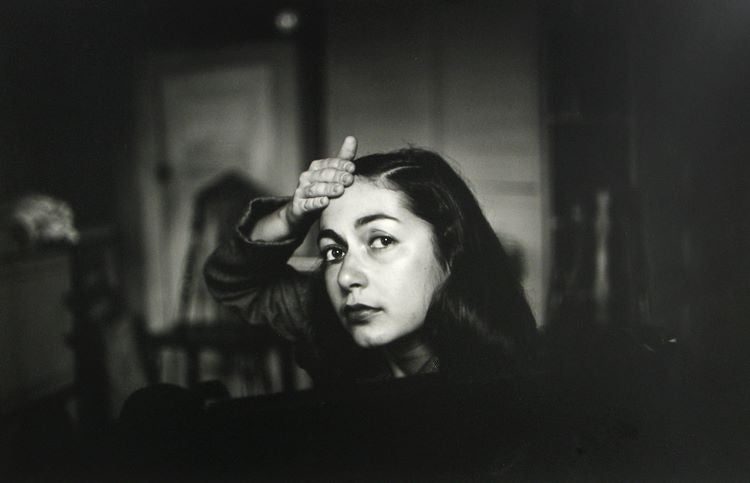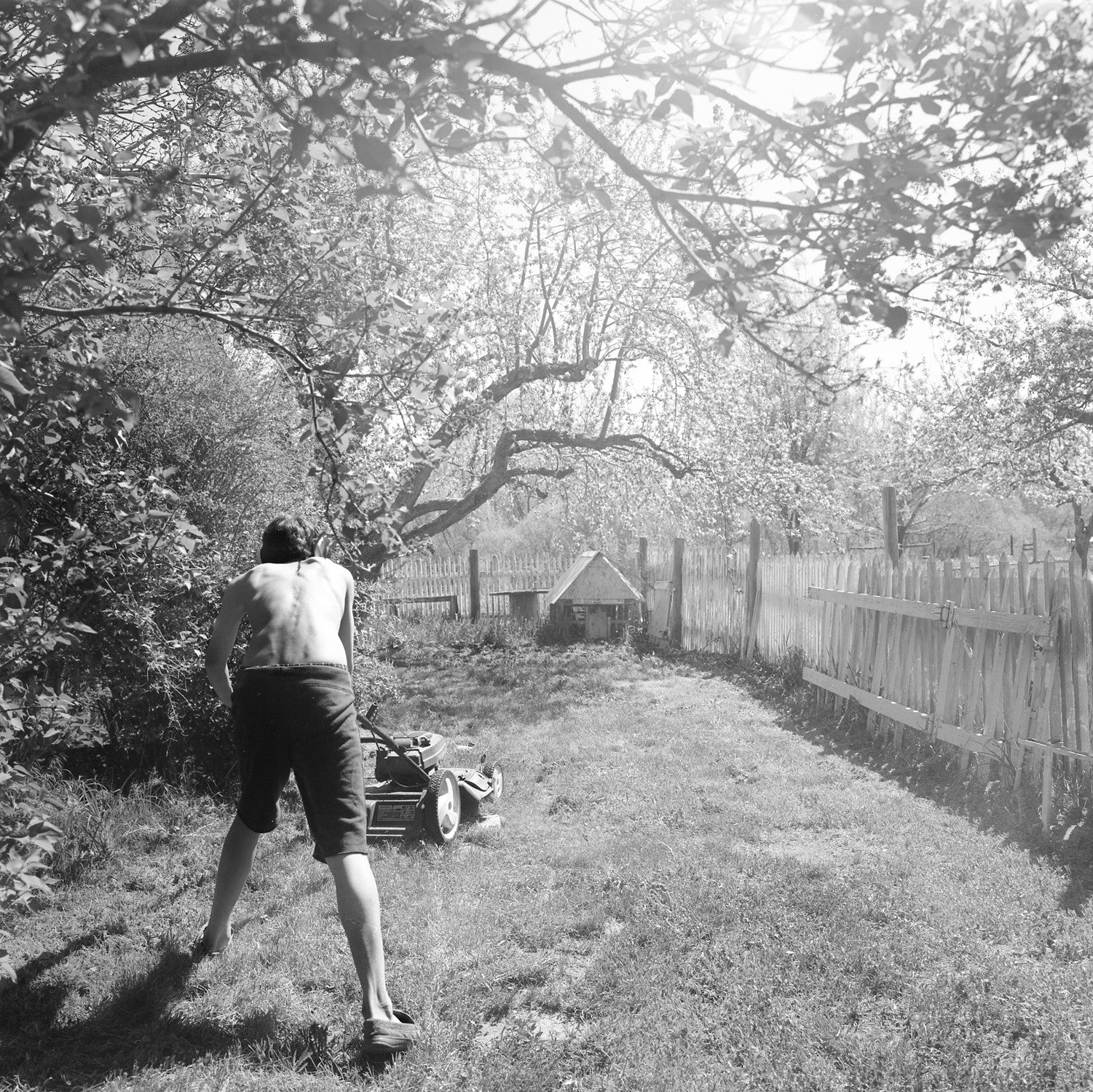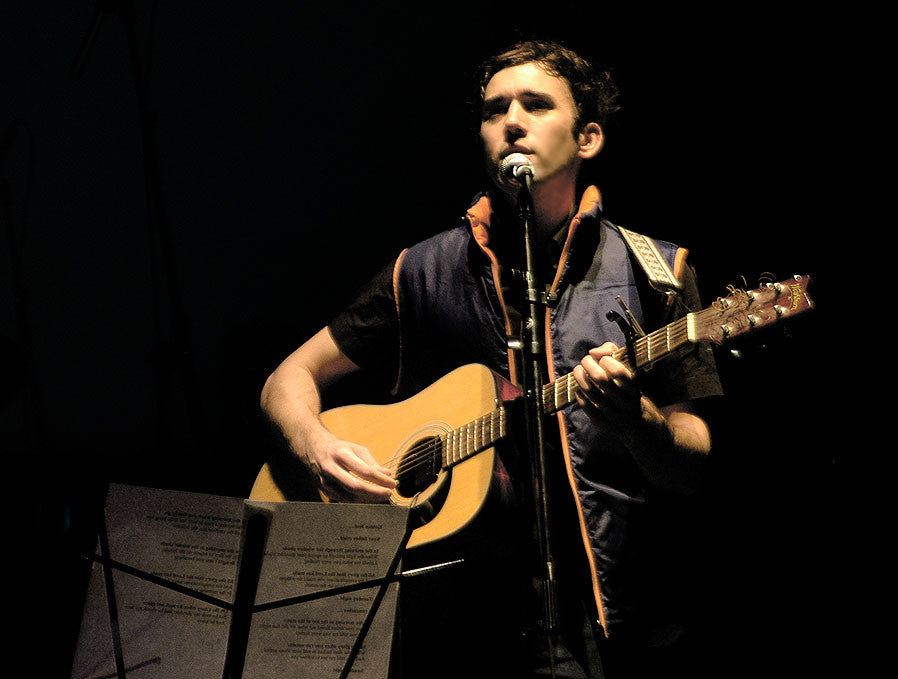
On photography and generosity
Somewhere around the end of last summer, I posted a photograph on Facebook. It was a rather unknown black and white photograph by the late Saul Leiter of his sister Deborah. It was made in 1947. I posted it after writer and lecturer Jörg Colberg had written a piece on his blog about the “gestures” of photography. By gestures, Colberg means what you’re doing and how you’re doing it when making a photograph. And that gesture has to do with what you want from the photograph, from what its objective is. “The age of innocence is long over in photography,” Colberg writes.“There have been way too many photographs made for anyone to be able to innocently take a picture anywhere.”
So while I agreed with Colberg when he argues that photography has a – sometimes dubious – history that cannot be ignored, looking at the photograph of Deborah, I was simultaneously ready to shut out everything I knew about photography, just to preserve what to me was at least a sense of innocence in this photograph. I wanted nothing to ruin the way I felt about it. So when I posted the photograph of Deborah on Facebook, I wrote: “Let's pretend there still is some innocence to it. Let's pretend it can be somewhat pure, even though it probably never was – not even in 1947.”
Trying to figure out why exactly I found this image of Leiter’s sister to be a symbol of innocence in photography – and if not of innocence, surely of purity – I gave it a scrutinizing look. Both her hand and posture suggest that she was unaware of being photographed – or maybe: unprepared to be photographed. And her face, with those big white and gentle eyes, is the very center of the image, the background is out of focus and pretty dark. So yes, it would be easy to think of this image as an innocent photograph, simply because it is a picture of an innocent looking girl.
But in what might seem a harmless act – the act of taking a picture of someone – Susan Sontag saw a direct assault on that person’s whole being. “To photograph people is to violate them, by seeing them as they never see themselves, by having knowledge of them that they can never have; it turns people into objects that can be symbolically possessed. Just as a camera is a sublimation of the gun, to photograph someone is a subliminal murder – a soft murder, appropriate to a sad, frightened time.” The unsettling implication this holds is that in this day and age we have no choice but to look at photography with a serious degree of suspicion. We must be alert at all times, for every person with a camera is a suspect – of what exactly, I must admit, I’m not entirely sure.
Although said by many to be a most simple and amiable man, Leiter can hardly be considered an innocent photographer – at least not according to Sontag. Looking at the many women he photographed, a lot of them in the nude, his is the typical male gaze. And though in a lot of these photographs there is a tangible tenderness, others (for example Sunday morning, The Cloisters, c. 1947) demonstrate a gaze that could be read as blatantly dominant and could easily become a part of the feminist discourse of the male photographer as a sexual predator. So much for innocence, indeed. The main reason this particular image of Deborah felt so pure, I soon realized, is because she is his sister. It’s a photograph – a quick snapshot, really – that completely lacks the sexual tension found in his nudes. So in terms of photography no longer being innocent or pure, the picture of Deborah merely seems to be the exception that proves the rule.
My posting of this particular photograph should also be seen within a somewhat bigger concern. One where I have been wondering a lot about how I see photography today, in this simultaneously image-spitting and image-devouring culture, as it is becoming more and more self-centered and self-referential. At least in the art world it seems like photography has become about engaging with the medium itself instead of engaging with the outside world. Engaging with the medium, however, means questioning the medium. And questioning a medium, both through practice and theory, is questioning – at least to some degree – its innocence. At the same time it is exactly that loss of innocence, a realization that came to us through the theory on photography, that lies at the very origin of this new trend of investigating the medium.
In Towards a Philosophy of Photography Vilém Flusser speaks of how the photographer is only interested in the camera – or the apparatus, as he calls it, searching for new possibilities in the “photographic program” that haven’t yet been laid bare. The outside world, at which the photographer looks through the apparatus, is merely a pretext to achieve this. Looking at the recently released Photography at MoMA: 1960 – Now for Time’s Lightbox blog, photographer Mark Steinmetz notices how many photographs in the book “feel like illustrations of ideas. A large number of them interrogate, in one way or another, the medium of photography or the role of mass media representations in society.” The selection, he argues, “is tilted towards photographs about thoughts, not feelings.”
In other words, they show more interest in the theory of the frame than in the subject inside the frame. They show more interest in the form than in the content – which is why the trend is generally referred to as New Formalism. For these practitioners – artists using photography, as we tend to call them – photography becomes a creative game where they investigate ways to manipulate, expand, or perhaps even cheat on or overrule the rules of the game, the rules of photography. They are playing against the apparatus, to stay close to Flusser’s discourse, not towards a better understanding of the world around us. By doing so, however, they take our view farther away from that world – and from the human touch. “Where are the shadows? Where is the light?” Steinmetz asks.
In Doug DuBois’s recently released book, My Last Day at Seventeen, about a community of kids and adolescents living in Russel Heights, a housing estate in Cobh, Ireland, there is a close-up portrait, in lush colors, of girl named Mary. It’s a photograph he made in 2011. It struck me in the same way the photograph of Deborah did. I felt the same purity in it. Needless to say, I started to think about innocence again. And like I did with Saul Leiter, I looked at the bigger picture, in this case the whole book. And I looked at the context in which the work was made. I looked at what Colberg calls the gestures: what did DuBois do, how did he do it and what was – or what do I believe is – his objective with the work?

DuBois was invited to Cobh by the Sirius Art Centre in the summer of 2009. But it was Eirn, a seventeen year old feisty young lady and a participant in one of his photography workshops, who introduced him to the local community of youngsters, by taking him to their hangout spot. DuBois began to photograph and promised to come back the next year. He continued to do so for four summers, giving away prints of the photographs he made the year before. What makes My Last Day at Seventeen a truly remarkable body of work is the mutual generosity it shows, as a result of the long and trustful relation that was built between DuBois, Eirn and the community, who openheartedly invited DuBois into their lives and into their homes.
In a crowdfunding campaign for the book, publisher Aperture and DuBois decided to try something that was never been done before. Pledgers had an option to contribute a certain amount that not only would buy them a signed copy of the book and acknowledgement in the credits, but would also help produce a special community edition, to give to one of the young actors in the book. The campaign succeeded and the community editions were made. In early November, DuBois travelled back to Ireland to personally deliver them to the starring youngsters. They let him into their unsteady existence, he gave them a celebration of their youth and a sense of self-value that exceeds the boundaries of the working-class housing estate they live in.
What is fascinating about My Last Day at Seventeen is that DuBois manipulated the images in different ways, and some to great extent even. Among other things, he staged photographs or re-enacted stories the kids would tell him, images from cell phones, or photographs he made the year before. For DuBois these photographs are collaborations, and the act of being photographed he sees as a performance. “I’m much more interested in the literary truth that emerges from negotiating a pose or a scene for the camera than catching people and events in the moment”, he said in an interview.
Sometimes he would digitally create a completely new image out of several frames of one scene. Here one could argue that DuBois is cheating on the rules of photography, that he is playing against the camera. And in a way he is doing just that. The important difference however is that the manipulation itself is not the end goal here. It remains secondary to his personal, subjective view of the world – to the narrative. Instead of the world being nothing more than an excuse to experiment with the medium, DuBois is experimenting with the medium to create a truthful fiction that speaks of the world he is pointing his camera at. If anything, he is playing against reality to create a narrative. Dubois's photographs might not be innocent because of this, but they are pure in their intention. The work is pure at heart, because it stems from a generosity towards the world.
In more than one way, My Last Day at Seventeen reminds me of Chris Killip’s Seacoal, a book that was published by Steidl in 2011 but features work made in the 1980s. For one, both bodies of work are based on a longterm relationship between photographer and subject and the hard earned, mutual trust – and friendship – that arose from it. It remains a heroic tale, how between 1976 and 1982 Killip tried to get access to the Lynemouth beach, where a closed community was fishing out coal from the sea, using nets, horses and carts, and got the door slammed in his face. Until a sturdy man named Trevor Critchlow took him under his wing, assuring everybody that Killip was okay, that he wasn’t a benefits office informer. Killip finally moved onto the seacoal beach to live in a caravan, on and off for fourteen months.
The work is as rugged as it is poetic. But most of all it excels through the human character and the great dignity it shows. Like DuBois, Killip is giving back to his subjects through his photographs, by portraying them as silent but strong individuals, as warm families and as a tight community. By portraying them as real human beings. The work is about them - Killip is not using them to serve an artistic or aesthetic idea. The same can be said for DuBois. There are no special community editions of the Seacoal book, but there is as much generosity and value to be found in the elaborate thank you section of the book, where wonderful portraits show not only Killip’s gratitude for being allowed on the beach, but also his tremendous respect for his subjects. (The poignant portrait of Trevor Critchlow shows a proud, yet modest man.)
For a photographer to pull this off, in the astonishing way both Killip and DuBois did, it takes a certain degree of empathy – though not too much – towards his subjects and a certain degree of humility – though not too much – towards the medium and what it is capable of in terms of how we look at and interact with the world. Instead of trying to beat the camera on its own turf, these photographers are as grateful for as they are aware of the possibilities the medium gives them to engage with the world.
To be generous in photography might seem easy enough when people are at the center of the work. But when looking at the work of someone like Robert Adams, a similar generosity can be felt. For Adams photography has been a way of giving back to the landscapes that over the years he built a sustainable relationship with. In return for the beauty and the solace the landscape gave him, Adams gave nature the environmental awareness the work raised. Most of all, Adams’s generosity through photography, however, was aimed at life. “It seems to me that what art has historically, traditionally focused on are these moments of recognition and insight,” Adams once said. “By looking closely at specifics in life, you discover a wider view. And although we can’t speak with much assurance about how this is conveyed, it does seem to me that among the most important ways it’s conveyed by artists is through attention to form.”
What is so interesting in Adams’s statement is that he is not only well aware of the camera’s rules and programs and how they determine a view of the world – through the frame, through form – but as much of the way form can be used to actively shape that view – in this case, expand it. The goal for Adams, as it is for DuBois in My Last Day at Seventeen, of playing with the concept of form in photography, is not to say something about photography itself – as is the case so often today – but to give meaning to the world and to broaden our understanding of it. Or as Adams so eloquently puts it: “The notable thing, it seems to me, about great pictures is that everything fits. There is nothing extraneous. There is nothing too much, too little, and everything within that frame relates. Nothing is isolated. The reason that becomes so moving is that the artist finally says that the form that he or she has found in that frame is analogous to form in life. The coherence within that frame points to a wider coherence in life as a whole.”
One photographer whose entire career seems to be built on the premise of that last quote is Nicholas Nixon. For one, nobody else has been so obsessed with making everything fit within the frame as he has. It’s quite wonderful to hear him speak about how he started with looking to the city from above, then brought his large format camera to the ground, to suddenly see small humans appear in the frame. Shifting his attention to these humans, the scene itself got pushed to the background. The frames he shot became tighter, the compositions more and more exquisite. What Adams says is the perfect description of Nixon’s work: “there is nothing too much, too little, and everything within that frame relates.” The coherence within Nixon’s frames indeed points to a wider coherence in life as a whole.
In his elegantly modest text for the book Live, Love, Look, Last (2009) Nixon writes: “Even in my eager but aging hands, the medium remains pliable and responsive to the world. This is what I have always happily accepted as the beneficence of photography and its mysterious and forgiving force. For this gift of photography I remain delighted, awed and humbled.” And if Steinmetz poses the important question about where the shadows are and where the light is, it is Nixon who shows us the lasting relevance of that question: “Seeing the shadows clearly gives meaning to the brightness, and all else in between.” In closing, he writes: “Grateful for the challenge and the pleasure of serving photography, I move on.”
Photography has lost its innocence, under the influence of cultural, social, and technological evolutions. There is no way around that. And with that its credibility might continue to crumble down and the integrity of its practitioners will continue to be questioned – and rightfully so. But it still hasn’t lost its generosity. Photographers are still capable of giving back – and not just to their subjects through their work, but also to photography itself. The ones who do are the ones whose intentions are not related to the art world, but to the real world. Their questions are not concerned with what photography can give to them or their art, but what they can give back to the world and to life through photography. They are the ones still capable of engaging with this magical medium in such ways that they are restoring our faith and our wonder in it, and in what it can mean to all of us. It’s all in the gestures, really.



